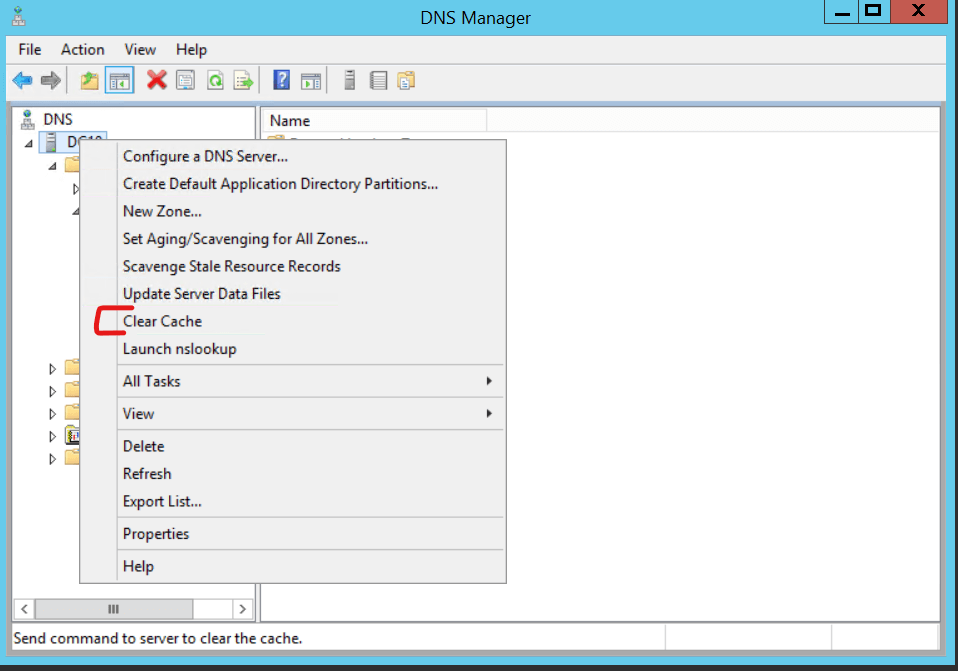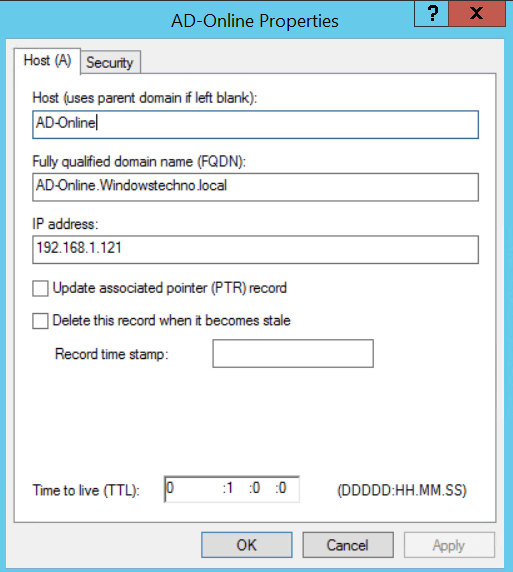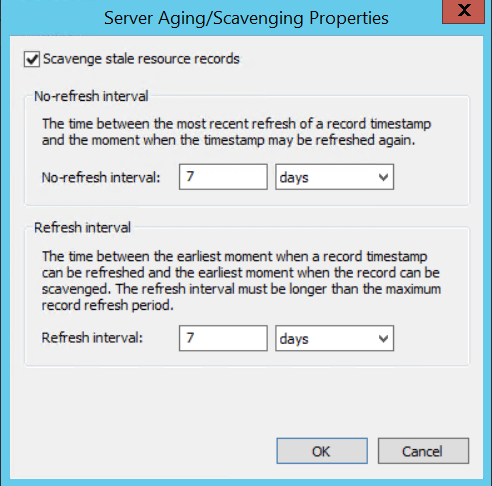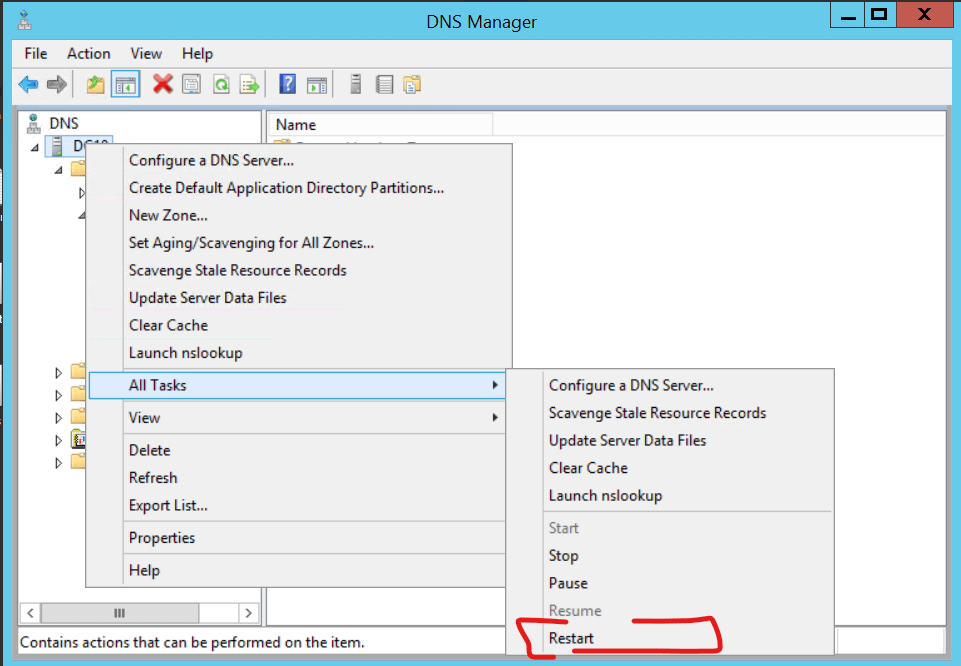Common DNS Cache Issues and How to Resolve Them
DNS cache issues occur when DNS servers cache outdated or incorrect DNS information, which can lead to DNS resolution failures and other issues. Here are some steps that can be taken to resolve DNS cache issues:
Clear the DNS cache
Clearing the DNS cache on the affected DNS server can help resolve DNS cache issues. To clear the DNS cache, open a command prompt on the DNS server and type “ipconfig /flushdns” followed by Enter.
C:\>ipconfig /flushdns
Windows IP Configuration
Successfully flushed the DNS Resolver Cache.
C:\>
Also clear the DNS cache from DNS console.
Increase the Time-to-Live (TTL) value
Increasing the TTL value on DNS records can help reduce the amount of time that DNS information is cached, which can help prevent DNS cache issues. To increase the TTL value, open the DNS console, locate the DNS record you want to modify, right-click on the record, select Properties, and modify the TTL value.
Configure DNS scavenging
DNS scavenging is a feature that can be used to automatically remove stale DNS records from the DNS cache. Configuring DNS scavenging can help prevent DNS cache issues. To configure DNS scavenging, open the DNS console, right-click on the DNS server, select Properties, select the Aging tab, and configure the scavenging settings.
Restart the DNS server
Restarting the DNS server can help clear the DNS cache and resolve DNS cache issues. To restart the DNS server, open the Services console, locate the DNS server service, right-click on the service, and select Restart.
Disable caching on the DNS server
Microsoft DNS Servers typically keep a record in cache for one day. You might occasionally need to turn off this feature for a DNS Server. You can change the registry item listed below to stop this behavior:
- KEY Name: HKLM\System\CurrentControlSet\Services\DNS\Parameters
- Entry Name: MaxCacheTtl
- Type: REG_DWORD
- Value: 0x15180 (this is the default value)
By taking these steps, administrators can help prevent and resolve DNS cache issues, and ensure that DNS resolution is reliable and efficient.
So, that’s all in this blog. I will meet you soon with next stuff. Have a nice day!!!
Guys please don’t forget to like and share the post. Also join our WindowsTechno Community and where you can post your queries/doubts and our experts will address them.
You can also share the feedback on below windows techno email id.
If you have any questions, feel free to contact us onadmin@windowstechno.com also follow us on facebook@windowstechno to get updates about new blog posts.





